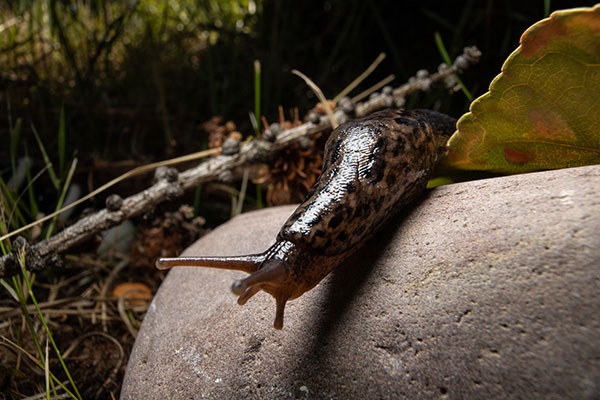Last updated: December 30, 2020
Lesson Plan
Eco-enrichers

- Grade Level:
- Upper Elementary: Third Grade through Fifth Grade
- Subject:
- Science
- Lesson Duration:
- 90 Minutes
- Additional Standards:
- NGSS 5-LS2-1. Develop a model to describe the movement of matter among plants, animals, decomposers, and the environment.
Essential Question
What is soil composed of and why is it important in an ecosystem?
Objective
Students will be able to evaluate the importance of plant and animal matter as contributors to soil; and recognize that wildlife in many forms contributes to the diversity and balance of ecological systems.
Preparation
- Two 1 hour sessions with 3 weeks between
- Soil from the same source to fill three 1' x 1' x 1' containers
- Earthworms
- Composting material (like kitchen scraps and yard leaves)
Procedure
1. Select some soil that is not particularly rich-it might be heavily compacted: by a roadside; or in an area where there has been a lot of erosion. Note, however, that soil may look infertile but be rich with inorganic nutrients. Take a large enough sample of the soil to fill three 1' x 1' x 1 containers.
2. With your students, do simple soil tests to determine the quality of the soil.
For example:
a. Look for signs of plant or animal matter in the soil-count the number of species you can identify; examine a sample under a microscope; count the number of organisms in the sample; estimate the number of organisms in the entire quantity of soil in the container based on the number of the sample.
b. Test acidity and alkalinity with pH kits.
c. Check porosity by determining how fast water will run through.
d. Conduct a settling test to see what general proportions of soil components are present; i.e., sand, silt, clay, organic matter.
3. After the soil tests have been completed and recorded, it is time to see what contributions at least one form of wildlife can make to the richness of soil. Divide the soil into the three containers. One container is the “control.” The second is for soil and compost only. The third is for soil, compost, and earthworms.
4. Begin adding composting materials (plant and animal matter)-like table scraps. grass clippings, leaves, etc. to the second and third containers. Add earthworms to the third container. Occasionally water the soil lightly-to simulate a rainstorm. You can also lightly water the first box-but do nothing else to the first box of soil. NOTE: You can begin with a larger number of earthworms if your soil box is large. and if you want to speed up the process.
5. Since the worms are in a limited environment you and the students will need to keep adding the food and other composting materials. Compost may be added to the second container as well. Plan on adding materials once a week for three weeks, and watering lightly once a week. Encourage the students to watch for changes in any of the boxes. An observation sheet can be attached to the outside of each box for the students reporting purposes.
6. At the end of the three-week period conduct the same set of experiments you originally conducted with the soil. Conduct the tests with all three boxes. In testing the soil in the earthworm box, make sure the students take care not to harm the earthworms; many may die anyway. Be prepared for this possibility, and add additional earthworms as necessary.
7. Discuss the findings. What differences are there in the three soil samples?
Variations and Extensions:
Plant some seeds in all three of the soil boxes. Pick fast-growing seeds, like radishes. Seeds from plants native to the area might be available as well. Plant the same number of seeds in each of the soil boxes. Record the date of planting. Record all watering procedures and changes in the boxes as the plants begin to grow. After three weeks, compare and discuss the results. Describe the importance of plant and animal matter as contributors to soil. Talk about earthworms as one example of the role of wildlife in contributing to healthy environments.
Vocabulary
Ecosystem: A community of living things interacting with each other and with the physical environment. Major types of ecosystems include aquatic (pond, creek, lake, ocean) and terrestrial (grassland, forest, desert).
Soil: The upper layer of earth in which plants grow. Typically consisting of a mixture of organic remains, clay, and rock particles.
Nutrients: A substance that provides nourishment essential for growth and the maintenance of life.
Acidity: The level of acid in substances
Alkalinity: Refers to the capability of water to neutralize acid.
Porosity: The void or empty spaces in a material,
Organic: Derived from living matter.
Composting: A process in which organic material breaks down and becomes soil.
Decomposition: the break up into simple parts; from a dead tree to soil.
Assessment Materials
List three ways that earthworms have a positive effect on soil. Name three other types of wildlife, and describe briefly how each contributes to improving or maintaining soil.
